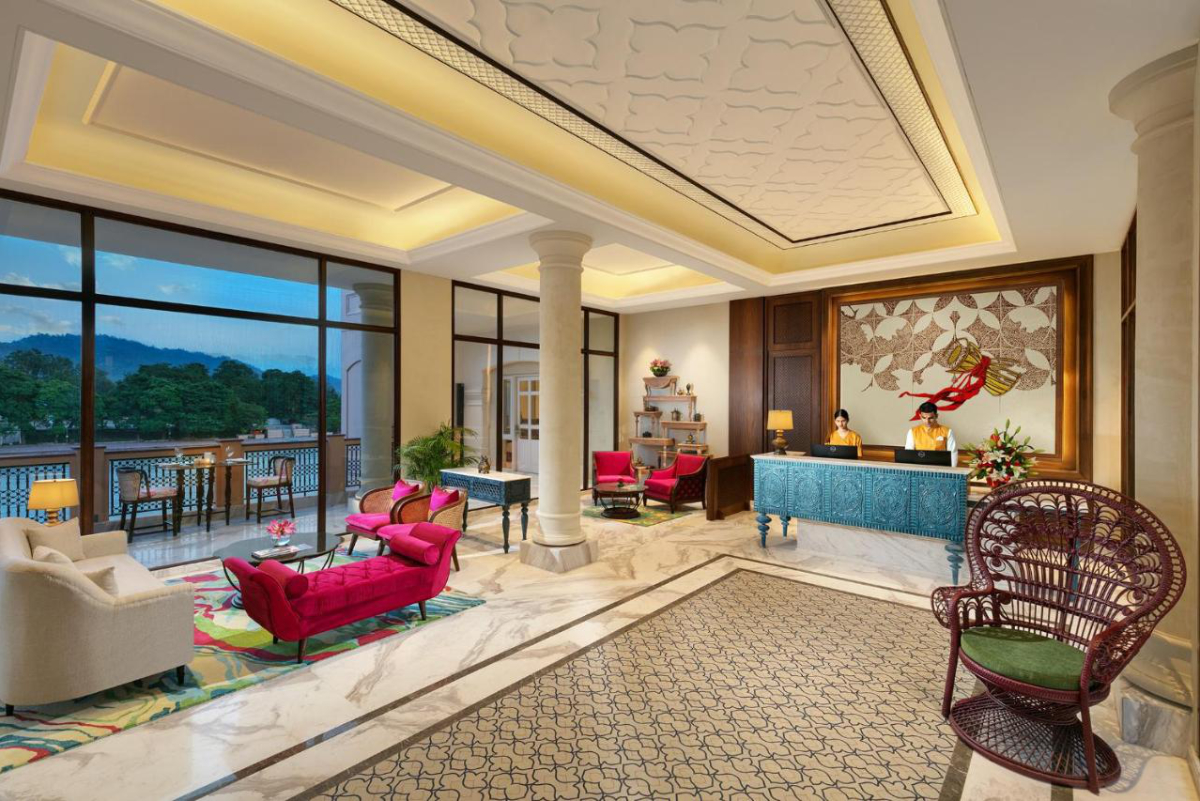Skift Take
A peek into the financial records of India's hotel companies would provide valuable insight into the country's flourishing tourism industry.
As demand outpaces supply in the Indian hotels market, the asset-light Indian Hotels Company (IHCL) reported its highest-ever full year consolidated revenue and a profit after tax of $122 million — a historic first for the company.
In 2019-2020, the company had reported a profit after tax of $750,000.
“The combined performance of the three best years for the company, which was 2006-2008 and 2017-2020, is less than the financial performance of 2022-2023,” said CEO and managing director Puneet Chhatwal at an earnings call on Friday.
Crediting the lease portfolio for providing the company with right operating leverage, the IHCL chief said the management fee business is helping drive margins in a very strong way.
“Our management fee businesses almost doubled in the last year to almost $49 million and this is only going up,” he said.
According to Chhatwal, Indian Hotels already has a balanced portfolio of owned/leased and managed hotels, and if hotels in development are taken into account, the company is already at a 50:50 ratio.
He hoped this balance would be maintained for operating hotels within the next 18 months. The ratio till last year was at 54:46.
Small Moves on International Expansion
The company has also started making “small moves” on the international expansion as its focus during the last five years had been in India.
“Our 250th hotel was in Saudi Arabia’s Riyadh and recently we signed the twin Taj and Vivanta in Dhaka, the capital city of Bangladesh,” said Chhatwal while adding that the company would be working on an asset-light basis, looking for more properties on operating lease or on management contracts.
“We do not engage in the acquisition of assets,” he said.
Speaking earlier to Skift, Chattwal had focused on the company’s asset-light growth driven through management contracts or operating leases.
Calling New York and San Francisco profitable pre Covid, Chhatwal said the UK and U.S. markets are still operating at 92 percent and the company expects in the next few months for these markets to either get to 2019-2020 level or exceed that.
“We have done very well in curtailing our losses in New York, which have reduced to a significant level. We have also reduced the cost of lease and renegotiated our agreement,” he said.
A Balanced Portfolio
With Taj reaching 100 hotels, and the midscale brand Ginger Hotels getting close to 100, Chhatwal said Vivanta and SeleQtions together account for almost 78 hotels and very soon this number would also go up to 100.
According to Chhatwal, Ginger Hotels, which is a part of the company’s “lean luxe” offering, is a top priority for the company, as he considers it an ideal brand for India’s diverse landscape. “Ginger is also the fastest growing brand in terms of number of hotels,” he said.
In the last financial year, Indian Hotels crossed 260 hotels in its portfolio, including 36 signings at a rate of 3 hotels a month and 16 openings or a new hotel every three weeks in the year.
Commenting on Taj Hotels reaching a portfolio of 100 hotels, Chhatwal said, “Five years ago, we had 31 hotels in operation and another seven or eight in development, this shows a 2.5 times growth despite two years of Covid in the backbone of the company.”
Last year, having signed 36 new contracts, the company opened 16 hotels and still has a robust pipeline of almost 73 hotels, the CEO said. “We plan to open a minimum of 20 hotels this year.”
Demand and Supply
Chhatwal said the imbalance between demand and supply in the hotel sector will persist as there has been a shortage of hotel construction in the past three years. He expects the situation to continue to drive occupancy rates and prices.
He attributed the growth of new businesses to events and conferences, as well as the thriving wedding industry.
India’s presidency of Group-20, the upcoming cricket world cup being hosted in the country, and the expected return of foreign tourists from October onwards, are also likely to boost demand for hotels.
Chhatwal said that while the company this year did not really spend any money on growing its home sharing brand Amã and its culinary and home delivery platform — Qmin, it would be using some of its free cash flow to really scale up the businesses because of the margins they drive.
Chattwal suggested that blended travel, a trend that emerged during the Covid pandemic, is now a permanent change in the way people travel.
He further added that despite continued saving habits, people are willing to spend more than they did before Covid, which is evident in the increased demand for hotel rooms and food and beverage offerings.
Despite this positive outlook, the Taj boss acknowledged that the visibility of long-term bookings remains limited, making it difficult to predict what will happen in the months of July, August, and September.
Continuing on its journey of balancing the portfolio, Chattwal said the company would not be investing into single assets except for very key strategic investments, like the Ginger Hotel in Santacruz, Mumbai and the combo development of Ginger and Vivanta in Kevadia, Gujarat.
Skift India Report
The Skift India Report is your go-to newsletter for all news related to travel, tourism, airlines, and hospitality in India.
Have a confidential tip for Skift? Get in touch
Tags: asia monthly, domestic tourism, earnings, food and beverage, future of lodging, hospitality, hotel earnings, india, Indian Hotels Company, skift india report, taj hotels
Photo credit: The lobby of Pilibhit House, Haridwar IHCL SeleQtions. Source: IHCL. IHCL
